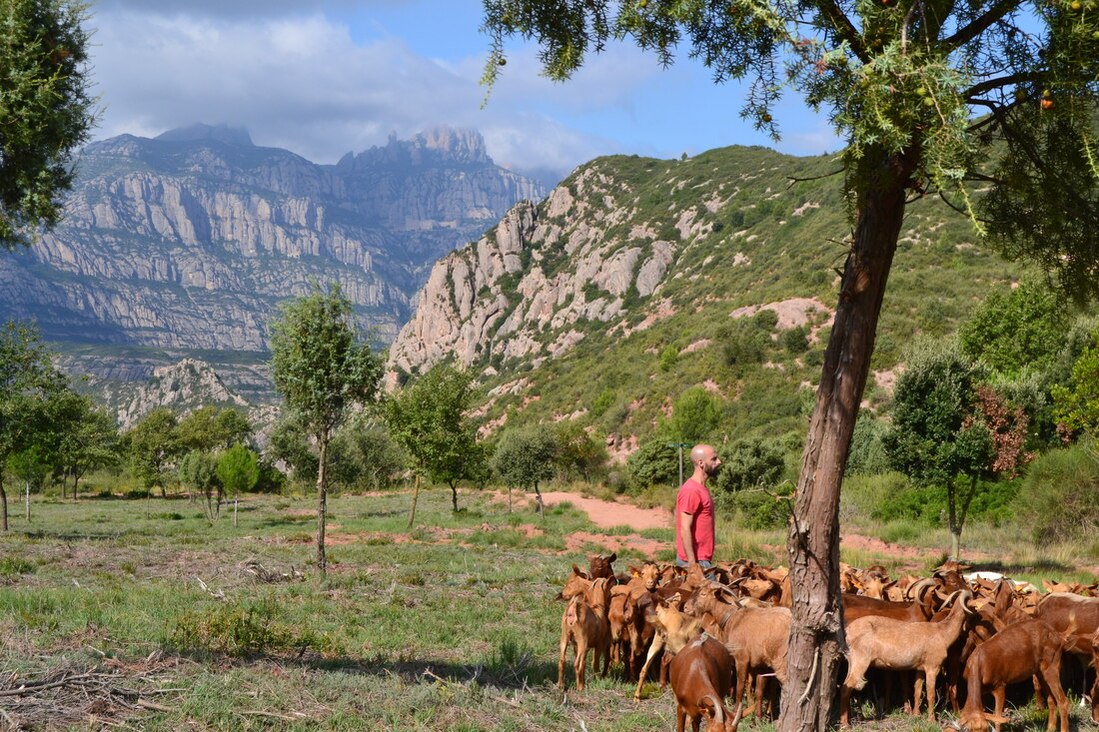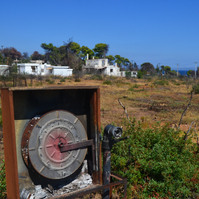Exploring the Mediterranean
On September 23rd, I departed Canada for Spain, with brief visits to Greece, Morocco, and France. During my month in the Mediterranean I have:
- traveled with a group of ¨FireShepards¨ throughout Catalonia,
- shadowed Spain’s foremost wildland firefighter and fire behavior analyst,
- worked for the Pau Costa Foundation,
- attended a conference on Resilient Landscapes,
- educated elementary school children on the basics of wildfire management,
- explored the fire-scarred ruins of Mati,
- toured Casablanca at dusk and dawn
- visited the Reina Sofia and the Museu de Picasso
- attended an informative, post-fire community engagement seminar on the Torres de LEspanyol fire
FireShepards
The FireShepards project is a knowledge exchange project faciliated through the Pau Costa Foundation aimed at educating and equiping shepards with wildfire expertise. Historically in Europe, rural peoples used far more of their available landscape than they do now, as many rural areas have been depopulated due to urban growth. The result is the loss of a land-use mosaic and overgrowth of fire-adapted vegetation, leading to large and intense wildfires. The vision for the FireShepard program is to restore wildfire knowledge back to rural land-users and offer them incentives to graze their animals in particular, strategic areas for operational wildfire response. This process requires collaboration between firefighters (who identify and map the strategic areas), land owners (who own the area which have been identified), and the shepards (who graze and reduce fuel loads). During a wildfire, these areas serve as markers for reduced fire behavior and potential breaks for firefighters to perform efficient suppresison. The land owners benefit by reducing the flammability of their lands, and the shepards benefit as they may have areas to graze freely and market their produce as part of the FireShepards program. Overall, the FireShepards program represents an innovative initiative to expand wildfire awareness and reduce future risk.
Marc Castellnou
Marc is by far the closest I have come to meeting a wildfire rockstar, as no else in the field (that I know of) has documentary filmmakers constantly following them. There is good reason for Marc´s fame, he is the foremost wildland fire thinker in all of Spain, and potentially all of Europe. He established the Group of Support for Forest Actions (GRAF), who are the wildland firefighters for all of Catalonia. He is also an expert when it comes to fire behavior, wildfire operations, prescribed burning, and planning; he does it all. I was extremely fortunate to spend a week shadowing Marc throughout his day-to-day, in which he:
Marc in many ways is a mentor and leader for anyone interested in wildfire. It was fascinating to learn from him about the ways in which transperancy, credibility, knowledge, leadership, communication, and uncertainty apply to wildfire.
Above: this photo represents the beautiful Catalonian country side. However, when I took a hike through it, it became apparent that it had not always been this way. The area was filled with human structures such as homes, terrace agricultural walls, and animal paddocks. It clearly used to be heavily influenced by human use, but has since become overgrown. While this may be beautiful for asethetic purposes, it poses a signficant risk for a continuous wildfire propagation.
Many of the conversations in Europe have revolved around the restoration of the rural economy to deal with wildfires. Essentially, if rural areas can return to their previous state with a mosaic of land-use, there will be less continuous fuel for wildfires. The picture above represents this mosiac. One of the researchers I spoke with was conducting studies on what types of mosaics - aggregated or dispersed- will best help to reduce the wildfire risk. So far her research is supporting disperesed models, in which areas of land-use are more spread out, despite being smaller parcels of land. However, Marc has made it clear that while restoration of a mosiac is important, it cannot solve the entire problem. Despite the low flammability of olive and agricultural operations, wildfires can move between areas of fuel by jumping and spotting. Therefore more management methods are necessary beyond just the expansion of land-use. Like all things relating to wildfires, there is no silver bullet.
One of the most impactful experiences of my Euro-tour thus far, was my visit to Matí, Greece. In 2018, over 90 people perished in a wildfire that was hardly larger than 3000 acres. Poor development planning and the absence of an evacuation plan and emergency services led to many people being stuck in their vehicles while attempting to escape. Matí today is sombering. It feels like a ghost town, just as when I returned to Malibu during the Woolsey Fire amidst the evacuation. Despite the many hallowed out and abandonded buildings, I managed to find and speak with a few survivors. Their memories and wounds were still fresh. Many worried that this will happen again and little had been learned. They said the government had taken a more aggressive approach to wildfire response, but it sounded as if little was being done on the preventive side of things.
As I write this, my home state of California is having its busiest October in recent history. I can only hope that we avoid a situation like Matí or another Paradise. However, I worry that like Matí we are learning little and only focusing on increasing our response.






